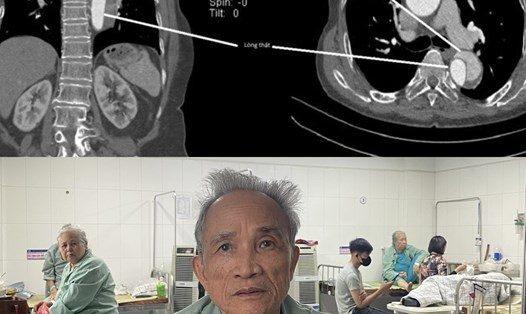facility to miss or diagnose incorrectly
According to Dr. Luong Cao Son - Deputy Head of the Department of Cardiology, Ho Chi Minh City University of Medicine and Pharmacy Hospital, chest pain is one of the common symptoms that cause patients to have to go for examination or even be hospitalized for emergency care, with constant concerns about cardiovascular disease.
However, at Ho Chi Minh City University of Medicine and Pharmacy Hospital, more than 50% of cases of chest pain do not originate from the heart.
Unlike common perception, non-heart breast pain is a very common condition but can easily be overlooked or diagnosed incorrectly.
Symptoms of these conditions can almost be mistaken for real angina such as a feeling of squeezing, tightening the area behind the sternum, spreading around or spreading to the shoulders, neck, jaw or left arm.
Therefore, distinguishing between heart-related and non-c heart-related breast pain becomes one of the major clinical challenges for doctors.
The chest cavity is home to many important organs such as the heart, lungs, esophagus, large blood vessels and the musculoskeletal system, all of which are controlled by the same nerve fibers. Therefore, when damaged, it can create a similar feeling of pain.
Intervention in the "golden hour" can decide life
Doctor Cao Son - Deputy Head of the Department of Cardiovascular Internal Medicine said that the most common causes of non-heart chest pain include gastroesophageal reflux, respiratory diseases such as pneumonia, pneumonia, emphysema, rib cartilage inflammation, chest muscle pain or anxiety disorders and prolonged stress.
Notably, some serious diseases such as atherosclerosis, pulmonary embolism or emphysema can kick in with symptoms of acute breast pain and a high risk of death if not diagnosed and treated promptly.
In these cases, detection and intervention during the "golden hour" can determine survival.
"We have encountered many cases of patients who have examined many places and performed many tests but have not been clearly diagnosed.
When receiving, the first thing is to synthesize all data and establish a new diagnostic direction, avoid repeating unnecessary steps" - Dr. Luong Cao Son shared.
Chest pain is not always a heart disease, but you should not be subjective. Once the risk of danger has been ruled out, continue to monitor carefully to find the correct cause and effectively treat











